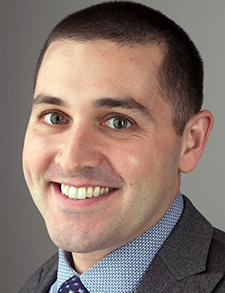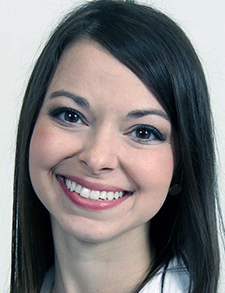A commitment to training physicians and SHM: a perfect match
When Daniel Ricotta, MD, SFHM, matriculated to residency in 2011, he didn’t know what hospital medicine was.
Now, as chair of SHM’s Physicians in Training committee, it’s his mission to make sure people know what hospital medicine is worth.

Dr. Ricotta
“Our goal is to really address the needs of trainees that are interested in hospital medicine,” said Dr. Ricotta, a hospitalist at Beth Israel Deaconess Medical Center in Boston and an assistant professor at Harvard Medical School. “Our charge is to promote hospital medicine among trainees, students, and residents, and to make sure the Society of Hospital Medicine is meeting their needs.”
The Physicians in Training (PIT) committee is one of 15 that advises the board of SHM. But as the panel is tasked in large part with constantly recruiting future hospitalists, it is unique in its purpose and pressure.

Dr. Crecelius
Committee member Teela Dawn Crecelius, MD, an assistant professor at Indiana University School of Medicine in Indianapolis, said it’s crucial for a field that has grown as much as hospital medicine to replenish its staffing pipeline with incoming students.
“It’s vital to our specialty to continue to recruit people who are interested and to support them on their pathway into the specialty,” she said. “I know when I was a trainee, I didn’t have a lot of support, and I would have appreciated a lot of what the PIT committee is trying to provide.”
The committee’s role is more than just marketing, of course.
The group is working to expand a mentorship program for trainees and is researching the utility of a gap year between residency and fellowship. In June 2021, it launched a monthly series of webinars to “provide information to trainees on topics that aren’t necessarily touched on in residency,” Dr. Crecelius said.
Topics so far have included: “From Billing Fear to Billing Fierce: Understanding How the Dollars Flow”; “7 Tips for Creating an Effective Mini Lecture”; and “Make it Count: How to Leverage Your Scholarly Work”.
The sessions offer residents an introduction to all the non-clinical duties and responsibilities that can be part of personal and professional satisfaction as a hospitalist. That point is key to Dr. Ricotta, who too often sees budding physicians who “default into hospital medicine as a career as opposed to making a really deliberate choice about it.”
To wit, he sees the PIT committee’s role as giving those trainees a reason to want to be a hospitalist, to “change the narrative…and make people really dedicated to the field.”
Despite the specialty’s meteoric rise in the past 25 years, it still lacks some of the allure of more established fields, to some extent, “students and residents make proactive decisions to enter a specialty that is highly competitive, in part because they have to as part of the fellowship process.”
But Dr. Ricotta knows now what he didn’t know 10 years ago as a resident—and the committee’s task is to share that knowledge.
“Hospital medicine, as a field, our value is what we bring to hospitals in terms of quality improvement initiatives, value-based care, communication with nursing staff, our skill as frontline teachers, and our commitment,” Dr. Ricotta said. “Not hospital medicine the noun, as a field, but the community that works within a hospital.”
“I think if we have more people dedicated to that mission, it’s going to add value to our field. Whereas the people going into it just kind of willy-nilly but aren’t dedicated to the other things that we do, we risk, it’s a risk to our identity.”
Dr. Ricotta also sees the PIT committee as a chance to introduce fledgling physicians and even early-career hospitalists to SHM as a whole. There are certainly other groups that support the field, including the Society of General Internal Medicine or the American College of Physicians.
But none are so laser-focused on career development for hospitalists as SHM. By providing interactive tools and opportunities before trainees have chosen the field—and in the early years of practice—the PIT committee is showing potential recruits and future leaders how inclusive the field is.
For Dr. Crecelius, that experience has taken on a personal bent.
It “has been one of my favorite things I’ve been involved in as a hospitalist,” she said. “I’m surrounded by people across the nation who are phenomenal at their jobs and are really, truly interested in helping students and trainees succeed in their career path to being a hospitalist. It’s a very encouraging and supportive environment, and it’s a great place for trainees to turn for support whenever they have any questions about the field.”
The Match
While the Physicians in Training committee doesn’t work directly on Match Day activities, it is perhaps the SHM panel most focused on ensuring those residents with a future eye to hospital medicine are successful.
A quick look at Match Day:
When: March 18 (always the third Friday of March)
What: Annual rite of pairing medical students with residency programs
Who: The National Resident Matching Program (NRMP), which began in 1952
Why: Students interested in exploring a career in hospital medicine can join SHM during residency training and access programs.
Learn about SHM’s Residents and Fellows membership opportunity and SHM committees.
Richard Quinn is a freelance writer in New Jersey.